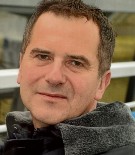Scientific Programme

Hietzing Clinic & Karl Landsteiner Institute for Metabolic Diseases and Nephrology, Vienna, Austria

Asan Medical Center Children's Hospital, South Korea

The Children’s Hospital & Institute of Child Health Lahore, Pakistan

Glycogen storage disease type 1b (GSD 1b) is an ultra-rare disease that is the result of a mutation in the SLC37A4 gene and reduced function of the enzyme glucose 6 phosphate translocase (G6PT). In addition to the classic symptoms of glycogenosis type 1a (hepatomegaly, nephromegaly, hyperlipidemia, hyperuricemia, metabolic acidosis, and hyperlactatemia) patients with glycogenosis 1b also have neutropenia and impaired neutrophil function, which makes them prone to infections. Infections of the skin and mucous membranes are the most, and it is estimated that most of them develop IBD-like disease. In addition to diet and cornstarch therapy, the application of the SGLT2 inhibitor, empagliflozin, showed very good results in reduced infection and inflammation in these patients and significantly contributed to the improvement of their clinical condition and quality of life, which has already been published several times. The incidence of GSD 1b in Serbia is about 1:60,000, probably more. I will share our experiences with diagnosis of GSD 1b, genotypic-phenotypic correlation, and results during SGLT2 inhibitor therapy, including the assessment of the patient’s quality of life.



Shaare Zedek Medical Center, Jerusalem, Israel


The Gaucher Unit, Shaare Zedek Medical Center, Jerusalem, Israel
The era of precision medicine, powered by advancements in multi-omics and artificial intelligence (AI), is reshaping the understanding and management of diseases. By integrating data from genomics, proteomics, metabolomics, and epigenomics, precision medicine offers deeper insights into disease mechanisms, facilitating the discovery of novel biomarkers and therapeutic targets. Artificial intelligence plays an important role in this transformation by enabling the rapid analysis of complex genomic data, uncovering disease subtypes, and predicting individualized treatment responses with unprecedented accuracy. Furthermore, using AI in predictive modeling enables real-time decision-making and personalized treatment plans, ensuring optimal care tailored to the individual. By redefining common disorders as rare, molecularly distinct entities, the era of precision medicine aims to foster a more personalized and effective healthcare system. This approach seeks to improve clinical outcomes, reduce healthcare costs through targeted interventions, and minimize adverse effects by focusing on each patient’s unique biology.


University Hospital of Geneva, Switzerland

Current IVF technology enables us to diagnose embryos carrying pathogenic gene variants through embryo biopsy. X-Linked genes present a special challenge since they are “hidden” in the female carrier, protected from expression by the other, normal X (The Lyon Hypothesis). Of the 876 genes on the X chromosome, 533 have been proven pathogenic. 167 genes for intellectual deficiency have been identified. Unfortunately, current commonly used carrier screening panels include no more than 70 X-Linked genes! Too many children and adults are still afflicted with severe diseases that could have been prevented with proper screening. In this talk cases will be presented to demonstrate these reproductive challenges, followed by a call for a major change in current screening methods, topped off by exciting innovations on the horizons.

McGill University Health Centre, Canada

The Gaucher Unit, Shaare Zedek Medical Center, Jerusalem, Israel

Neurology Unit, Policlinico Hospital of Milan, Italy



University of Amsterdam, Netherlands

Federal University of Rio Grande do Sul, Brazil



University of Versailles, France

Poznan University of Medical Sciences, Poland
Whole-body magnetic resonance imaging (WB-MRI) plays a crucial role in the assessment of bone marrow (BM) involvement in Gaucher’s disease (GD), offering both quantitative and semi-quantitative evaluation methods. More than three-quarters of GD patients may exhibit BM abnormalities on WB-MRI despite ongoing treatment. The most commonly used scoring systems for BM assessment include the Bone Marrow Burden Scale (BMB), the Spanish-MRI Scale (S-MRI), and the Vertebra Disc Ratio (VDR). In Poland, experience with MRI assessment includes over 55 patients with GD, providing valuable insights into BM involvement and disease progression. This study showed that 78% of patients had BM abnormalities, with a median BMB score of 6 and an S-MRI score of 5.5. Active bone lesions were present in 57% of cases, particularly in those with elevated chitotriosidase levels and liver enlargement. Patients with non-homogeneous BM morphology were at higher risk for active lesions and avascular necrosis (AVN). Bone pain, evaluated through the visual analog scale (VAS), correlated with bone disease severity. Elevated chitotriosidase levels, liver enlargement, and higher VAS scores may serve as indirect indicators of BM infiltration risk. Given its ability to assess disease severity and skeletal complications, WB-MRI remains an indispensable diagnostic tool for GD. Moreover, its utility extends beyond GD, as it may also be beneficial in evaluating patients with Fabry disease.

IECURE, Inc., USA
Initial Findings from the First In-Vivo, Liver Directed, AAV-Mediated, Gene Integration Clinical Trial for Infants
Gabriel M Cohn2; Julien Baruteau1; Anil Dhawan3; Anupam Chakrapani1; Stephanie Grunewald1; Molly Abbott1; Helen Ashton1; Sophie Foxall1; Ai-Ling Koh1; Christos Lazaridis1; Havea Navarro-Kennedy1; Hamza Patel1; Siyaminji Sivananthan1; Eleni Tamvaki1; Katy Vecchiato1; Matthew Hall2; Karen Kuhn2; Thomas White2; Barbara Pinho4; George A. Diaz2
1-Great Ormond Street Hospital for Children, London, UK; 2- iECURE, Inc., Blue Bell, PA; 3- King’s College Hospital, London, UK; 4- Fortrea, Inc., Princeton, NJ.
Background: Ornithine transcarbamylase deficiency (OTCD) results in impaired ureagenesis and hyperammonemia. Males with severe neonatal onset OTCD typically become hyperammonemic within their first 48-72 hours. Despite aggressive medical management, repeat hyperammonemic events are common and mortality rates are high. ECUR-506 is an in-vivo, liver-directed, gene insertion, investigational treatment for OTCD. Preclinical studies in young animals demonstrated that gene integration, in contrast to gene addition therapy, resulted in durable gene expression.
Methods: OTC-HOPE (NCT06255782) is a global, 24-week, first in human, single arm, Phase 1/2, open-label trial designed to assess the safety and efficacy of ECUR-506 in males <9 months of age with neonatal onset OTCD. Upon completion of OTC-HOPE study, participants will enroll in a 14.5-year follow-up study. Initial data of the first participant to complete the 6-month trial are described.
Results: The participant experienced 2 hyperammonemic events by 3.5 months of age. ECUR-506 was administered at 6.5 months of age. Grade 3 transaminitis was observed between weeks 4-8 post-infusion and resolved with immunosuppression. Reduced glutamine levels prompted nitrogen scavenger medication discontinuation and protein intake liberalization by post-dose weeks 12 and 16, respectively. Over the remainder of the 6-month study, while off scavenger medications and dietary restriction, mean ammonia levels remained normal and no hyperammonemic events were observed.
Conclusion: These data are from the first infant to receive an in-vivo, liver-directed, gene insertion, investigational product (ECUR-506) and complete the OTC-HOPE study. The observed safety profile and complete clinical response, by study definition, support the continued evaluation of ECUR-506.

University Medical Center Rostock, Germany
Background: Fabry disease arises from loss-of-function mutations in the α-galactosidase A (AGAL) coding GLA gene. Since the 2016 approval of pharmacologic chaperone therapy for patients with responsive mutations, about 2000 GLA mutations have been tested in vitro to identify eligible patients.
Objectives: Despite advancements in enzyme activity assays, these tests fail to detect critical splicing defects, which may impact therapy outcomes.
Methods: Unanticipated splicing dysfunctions in exonic GLA mutations can hinder pharmacologic chaperone therapy. To address this, a minigene reporter assay was developed to investigate potential splicing effects undetectable by enzyme activity assays.
Results: Human Splicing Finder (HSF) predicted splicing abnormalities for specific GLA mutations. Minigene assay experiments confirmed alternative splicing for mutations c.194G>T and c.358C>G, resulting in the use of alternative donor splice sites in exon 1 and exon 2. The c.638A>T mutation caused exon 4 skipping, while c.548G>T, despite low predictive probability, also displayed abnormal splicing.
Conclusion: A comprehensive assessment of GLA mutations, including mRNA splicing analysis, is critical to fully understand their mechanistic impact and avoid misguidance in prognosis and treatment.

Leibniz Institute for Natural Product Research and Infection Biology, Germany
